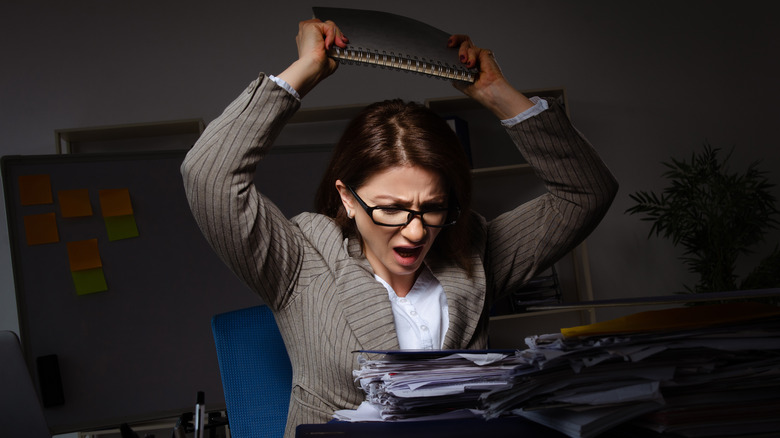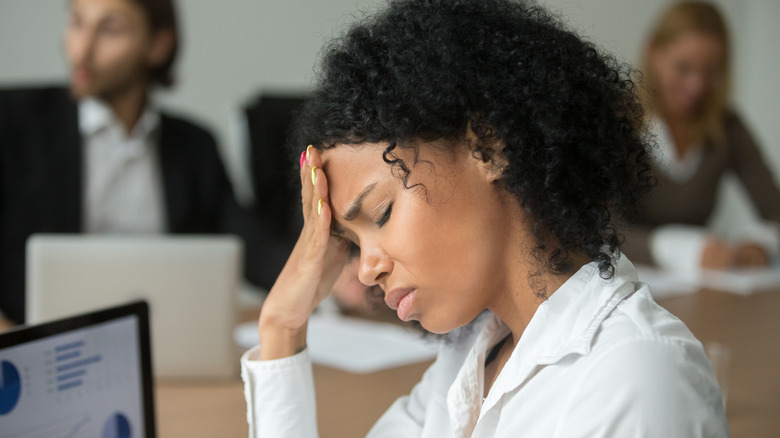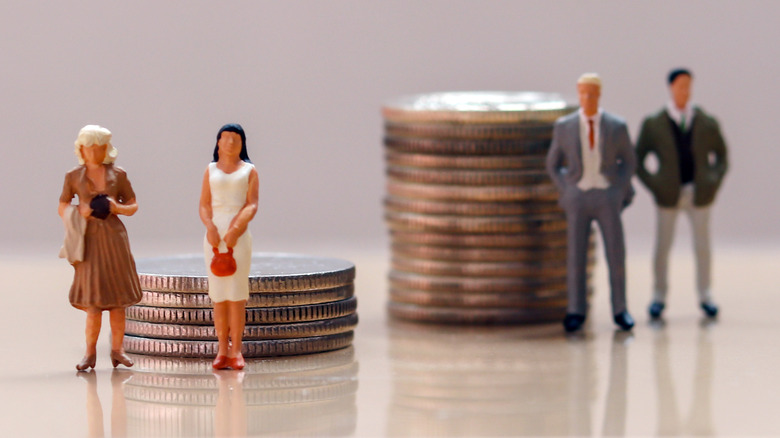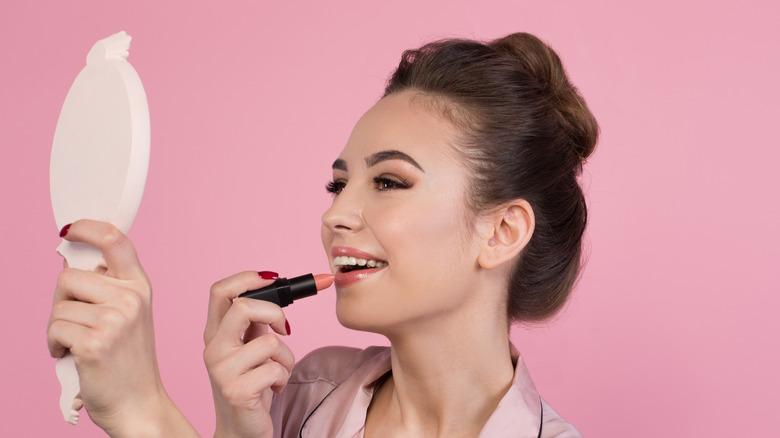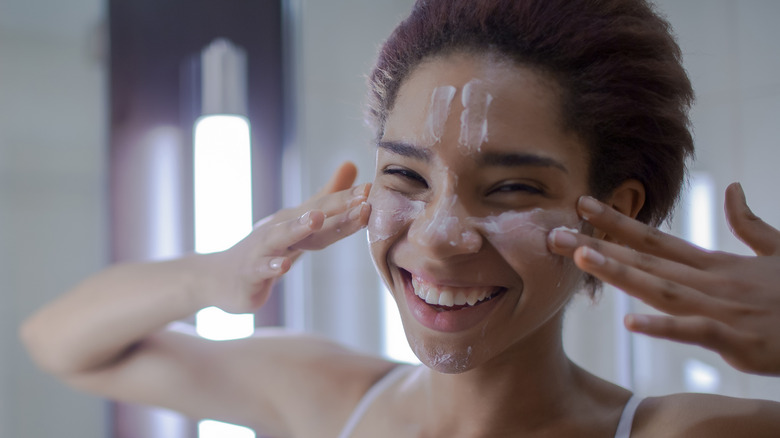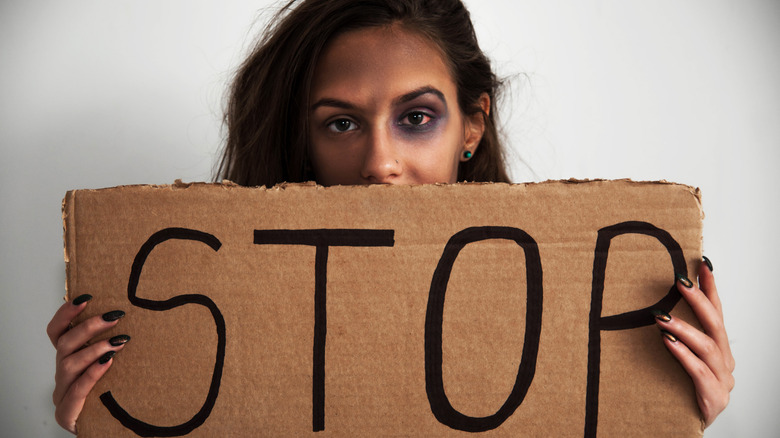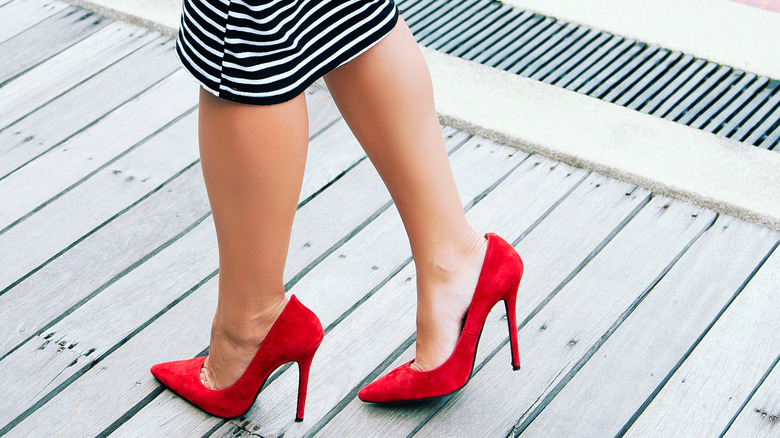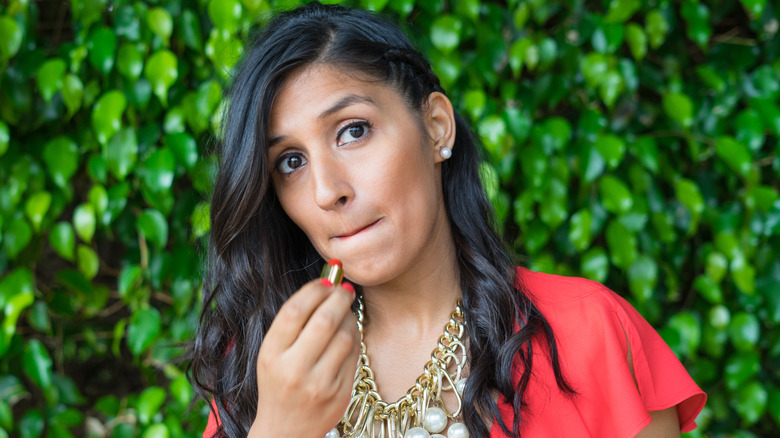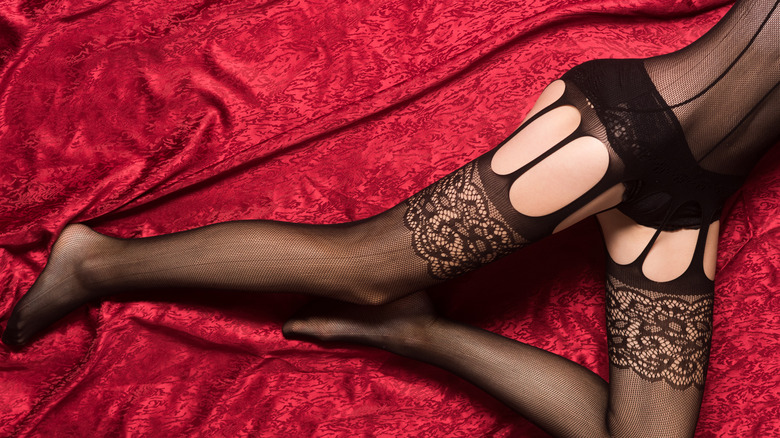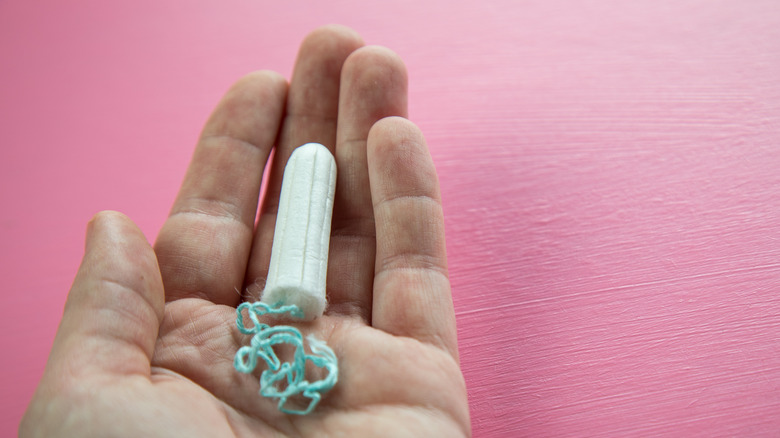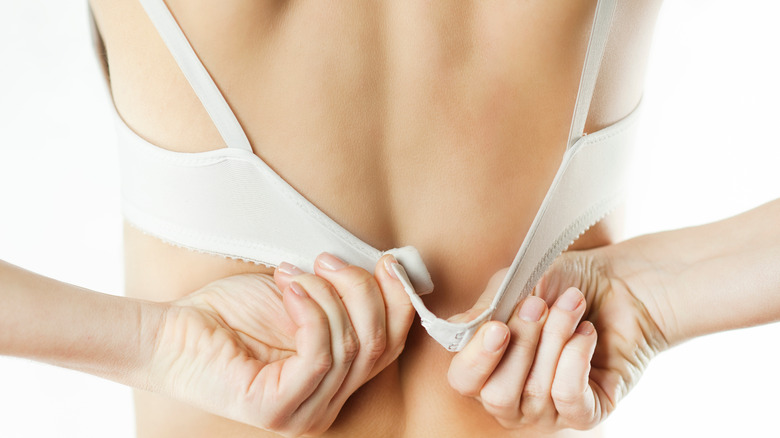Strange Things Only Women Will Understand
We may receive a commission on purchases made from links.
Much has been written over the years about the differences between men and women, and the 1992 publication of international bestseller Men Are From Mars, Women Are From Venus helped the two sexes better understand how the other one thinks, feels, and functions. The book also initiated a flood of questions about and research into the physiological and psychological differences between the sexes. But, spoiler alert: despite our so-called different planets of origin, studies show there are no major differences between men's and women's brains, and that gender has no impact on cognition or personality.
Despite the similarities in our brains and overall psychological function, women often have a radically different experience in life than men do. From serious issues like violence against women and the pink tax to lighter, near-comical things like the hazards of lip gloss on a windy day, read on to find out all the things that only women can relate to.
Mansplaining
How often have we had men talk over us, or better yet, explain things to us as if they're experts? Rebecca Solnit, author of the viral 2008 article Men Explain Things to Me (followed by a book of the same title), noted that, while it can happen to anyone, being "explained to" by men who are self-appointed experts is, generally, a gendered experience. "Men explain things to me, and other women, whether or not they know what they're talking about," Solnit wrote. After the article went viral, the term mansplaining became a mainstay of the Western popular lexicon, and it was even added to the Oxford English Dictionary in 2018.
Perhaps the biggest problem that comes from mansplaining is the chilling effect it has on its recipients. "Every woman knows what I'm talking about," explained Solnit. It "keeps women from speaking up and from being heard when they dare; that crushes young women into silence by indicating, the way harassment on the street does, that this is not their world. It trains us in self-doubt and self-limitation just as it exercises men's unsupported overconfidence." Ooof. That's no good.
The hazards of emotions in the workplace
Just about any professional woman will tell you how hard it is to navigate the expectations placed on women in the workplace. Despite more and more women entering the workforce, we are, by and large, struggling to get ahead. While there are many factors that feed into this phenomenon, one major factor is how women are perceived when we express emotion.
The Handbook on Well-Being of Working Women notes that, while both men and women are expected to show appropriate emotions in the workplace, "emotional expressions by women tend to come under greater scrutiny than those by men." Specifically, women are penalized, whether directly or indirectly, for expressing so-called "masculine-typed" emotions like anger — but they're also "judged as overly emotional and lacking emotional control" when expressing female-typed emotions. This "ultimately undermines women's competence and professional legitimacy," which puts women in a bind: we're judged for expressing our emotions, no matter what those emotions are. Clearly, the solution is for all of us to transform into robots. Ugh.
Struggling to be taken seriously at work
Similarly, an article published in The Academy of Management noted that in two different studies, men who spoke up promotively were rewarded for doing so and often emerged as leaders, whereas women were punished for doing the same thing.
Many women have noticed this in their own personal experiences. Brenda Kosciuk, a middle school teacher, explained to The List that it's especially difficult for women in the classroom to be respected by their male students. "A student will instantly respect a male teacher, while a female teacher has to earn the respect of her students," she said.
Whereas her male colleagues could be relaxed and funny with their students, while both holding their attention and still being able to be firm with them when necessary, Kosciuk found that she had to maintain a strict, serious atmosphere and that "as soon as I relaxed or tried to be myself with the students, I'd lose their respect." She also noted that she and many of her female colleagues "feel like we have a much harder job at classroom management than our male coworkers." This type of power differential makes for a long, difficult day at work.
The pay gap
While we're on the topic of women in the workplace, let's talk about the pay gap. While this is different in each country, in the United States, as of 2018, full-time working women earned 80.5 cents for every dollar that men earned, according to the Institute for Women's Policy Research (IWPR). If that trajectory remains, women won't achieve wage parity with men until 2059. The statistics are even more grim for women of color, as the wage gap between white men and women of color actually widened in 2017.
The IWPR also reported that the wage gap grows even wider when examined over time: when analyzed over a 15-year period, the "total earnings across the most recent 15 years for all workers who worked in at least one year, women workers faced a wage gap of 51 percent in the 2001-2015 period." This is largely due to women taking time out of the labor force, as well as the lack of paid maternity leave and affordable child care options in the United States. Frustration abounds.
The transformative power of makeup
Makeup has long been a source of joy and confidence for many women, and the power of a great tube of lipstick can't be underestimated. As Elizabeth Taylor once famously said, "Pour yourself a drink, put on some lipstick, and pull yourself together." In recent years, though, makeup has taken on new meaning as a form of creative expression.
In fact, according to The New York Times, Millennial women are driving a trend towards using makeup as an art form and a hobby. And, as most of us would readily attest, makeup is most often worn for one's own benefit — not for others. "After 20 years working as a makeup artist I can say quite confidently that women wear makeup for themselves," Lisa Eldridge, author of Face Paint: The Story of Makeup, explained to The Guardian. Not surprisingly, as The New York Times notes, Millennial women are using "almost 25 percent more cosmetics than they did just two years ago, and significantly more than Baby Boomers." If makeup is your jam, go for it!
The wonders of skincare
Skincare is its own world of wonderment, and it has become a form of self-care — a self-soothing mechanism for difficult times.
In The New Yorker, journalist Jia Tolentino noted that she "wasn't sure if I was buying skin care or a psychological safety blanket, or how much of a difference between the two there really is." Tolentino also explained that while "traditionally, skincare represents an attempt to deny the inevitability of the future," for her "it functions as a part of a basic dream in which the future simply exists." Other women have echoed Tolentino's sentiment, such as cookbook author Alison Roman, who, in an interview with The Cut, explained that "[skin care makes me] feel like I'm somewhat in control of my own destiny."
Not surprisingly, according to The Cut, Reddit's Skincare Addiction page saw its subscriber base increase by 100 percent from July 2016 until early 2018, and in the final six months of 2017, an additional 120,000 people subscribed to the page. As The Cut notes, it took two years before Skincare Addiction amassed its first 100,000 followers, from 2012 to 2014. If skincare helps you cope, more power to you!
The horrors of violence against women
One of the biggest problems we face is the pervasiveness of violence against women. According to the World Health Organization, approximately 1 in 3 women worldwide have experienced some form of physical or sexual violence in their lifetime — and much of it comes from intimate partners. In fact, 30 percent of women who've been in a relationship have reportedly experienced some form of physical or sexual violence at the hands of their partner. And, as UN Women notes, over the course of 2017, in 58 percent of cases worldwide in which a woman was murdered, the victim was killed by a male intimate partner or family member.
However, this isn't limited to intimate partner violence. According to the Bureau of Justice Statistics, in the United States the rate of violent crime committed against women, whether from family members, acquaintances, or strangers, increased from .98 percent in 2016 to 1.11 percent in 2017. Margaret Atwood's famous quote — that while men are afraid that women will laugh at them, women are afraid that men will kill them — is, sadly, backed up by data.
The debate over women's safety
Because violence against women isn't going away, many women are speaking out about our collective safety — and who's responsible for maintaining it. After the 2018 rape and murder of Eurydice Dixon in Melbourne, Australia, women noted that many of us already implement all the recommended tactics, but such precautions don't guarantee safety.
According to Bianca Fileborn, a professor of criminology at the University of New South Wales, "even if some women are able to effectively harness 'safety' strategies in some situations, this is not effective as a prevention tool. At best, it could be thought of as victimization avoidance." And indeed, as the Queen Victoria Women's Centre wrote on Facebook (via ABC News), "Women are instructed to own their personal safety, while society ignores the actual problem: that women are constantly attacked by people they know or strangers."
The bottom line, which is summed up nicely in a 1995 study published in the Annals of the American Academy of Political and Social Science, is that, while "individually managed precautionary strategies" address some of the risks that women face, it's only a fraction of the broader picture.
The treachery of walking in high heels
High heels are a mainstay in many women's lives, but our collective relationship with heels is fraught: while plenty of women love them and feel fabulous wearing them (more power to you, ladies!), they can involve some unintended consequences. The most immediate one is that they turn city streets into a veritable obstacle course; between sidewalk cracks and ventilation grates, navigating a single city block in heels requires attention, strategy, and near-constant maneuvering.
Longer-term, wearing high heels can cause some unpleasant health issues. According to the American Podiatric Medical Association (via the University of Arizona Health Sciences), 71 percent of high heel wearers report experiencing foot pain, and the American Osteopathic Association (via the University of Arizona Health Sciences) reports that "up to a third of women suffer lasting damage due to habitual heel wearing." Not only that, but according to a report published in the Journal of Electromyography and Kinesiology, over time, high heels can permanently "alter the natural position of the foot-ankle complex, and thereby produce a chain reaction of (mostly negative) effects that travels up the lower limb at least as far as the spine." Ouch.
The struggles of lip gloss and skirts on a windy day
Real talk: who among us hasn't had an "oh no" moment upon stepping outside — looking fierce in a skirt or dress and rocking our best lip gloss — only to realize that it's windy?
The fact is, wind presents a considerable challenge in both situations. When it comes to lip gloss, having most of your hair adhered to your mouth, and then stuck together like it's coated in honey, is a quick way to find yourself super annoyed. Meanwhile, when presented with wind or updrafts from sidewalk vents, skirts and dresses become less of a fashion statement and more of an effort to herd cats. The List spoke with some regular women to get their take on this common female experience, and Lisa M. noted: "Technically any femme or Scotsman may experience this, but not all of us wanna be Marilyn Monroe, and the walkway from my car to my office building is a wind tunnel." First world problems, we know — but still, as she noted, "The struggle is real."
The bizarre presentation of women in the media
When you actually pay attention to how women are presented in advertising and media, you start to see how messed up it is. This issue started gaining traction in the late 1990s and early 2000s — and it's become a hot topic since then, with documentaries such as Miss Representation and Killing Us Softly illustrating the depth and breadth of the problem.
As Jennifer Siebel Newsom, who wrote and directed Miss Representation, told NPR, modern media is "all about viewership and numbers. And the way that the media is increasingly selling to us is through sexualizing women." As she also explained to HuffPost, "what our culture is communicating to us vis-a-vis the media...is that a woman's value lies in her youth, her beauty, and her sexuality and not in her capacity to lead." This leads to a lack of women in positions of leadership, power, and influence, but as Newsom noted, "once people at the top start... figuring out how to empower the next generation of female leaders and how to empower the men that are in leadership positions to value women," a cultural shift will arrive. We sure hope so.
Harassment and abuse at work
As the #MeToo movement progresses, women are increasingly speaking out about their experiences with workplace sexual harassment and abuse. According to the IWPR, the issue is widespread, with various studies estimating that anywhere from 25 to 80 percent of women experience workplace sexual harassment in their lifetimes. The IWPR also notes that the fallout from harassment and abuse at work can include physical and mental health issues, career interruptions, lower earnings, and limited career advancement opportunities.
However, more and more women have started to speak up in recent years. According to NPR, sexual harassment claims reported to the Equal Opportunity Employment Office (the agency that oversees claims of illegal sex discrimination under the Civil Rights Act) doubled after Anita Hill testified against her former boss and then-nominee to the Supreme Court, Clarence Thomas, in 1991.
Since then, Gloria Allred, who represented women assaulted by Bill Cosby, has noticed what she describes as a domino effect: "The more women speak out the more other women want to speak out. And those who have, in their view, perpetrated wrongs against them are now facing accountability in the court of public opinion." Change is coming.
The pink tax
Let's talk about the pink tax, which entails higher prices for items marketed specifically to women. Think razor blades, deodorant, or, for some comic relief, Bic pens. In 2015, the New York City Department of Consumer Affairs conducted a survey of gender-driven pricing of goods and services throughout the city, including products such as toys, clothes, and personal care products, and the findings were disturbing: on average, women's products cost 7 percent more than men's. Women's clothing cost 8 percent more, and women pay 13 percent more for personal care products.
Added to this is the cost of menstrual products, which leads to considerable accrued expenses over the span of a woman's reproductive years. In the UK, a woman can expect to spend about £1,660 on menstrual products over her lifetime; in Canada, $2,275; in the U.S., $3,360. Additionally, in many countries worldwide and states in the U.S., those products are subject to either sales tax or value added tax (VAT) — and unlike, say, Viagra, which is tax-exempt in many states because it's a drug, feminine hygiene products aren't considered medical necessities. What fun.
All things boob-related
Our breasts have an undeniable impact on our lives: from the scourge of boob sweat to the struggle of finding a bra that fits, we spend a lot of time managing our mammaries.
When it comes to exercise, while sports bras can help attenuate breast movement, they almost never eliminate it — which often leads to pain and discomfort. In fact, a 2019 study published in the Journal of Science and Medicine noted that breast size had a direct impact on women's participation in physical activity. Women with large breasts participated in significantly less physical activity than their smaller-breasted counterparts, and most of those women stated that their breast size affected the amount and intensity of exercise they engaged in.
Jene Luciani, author of The Bra Book, told The List that "the wrong bra and bra-related issues — or bra-lems, as I like to call them — can affect your confidence and self esteem." If your bra makes you uncomfortable, it can lead to being hunched over all the time, which can cause back, shoulder, and neck pain, as well as "chafing, skin irritation, and even infection." Yikes!


